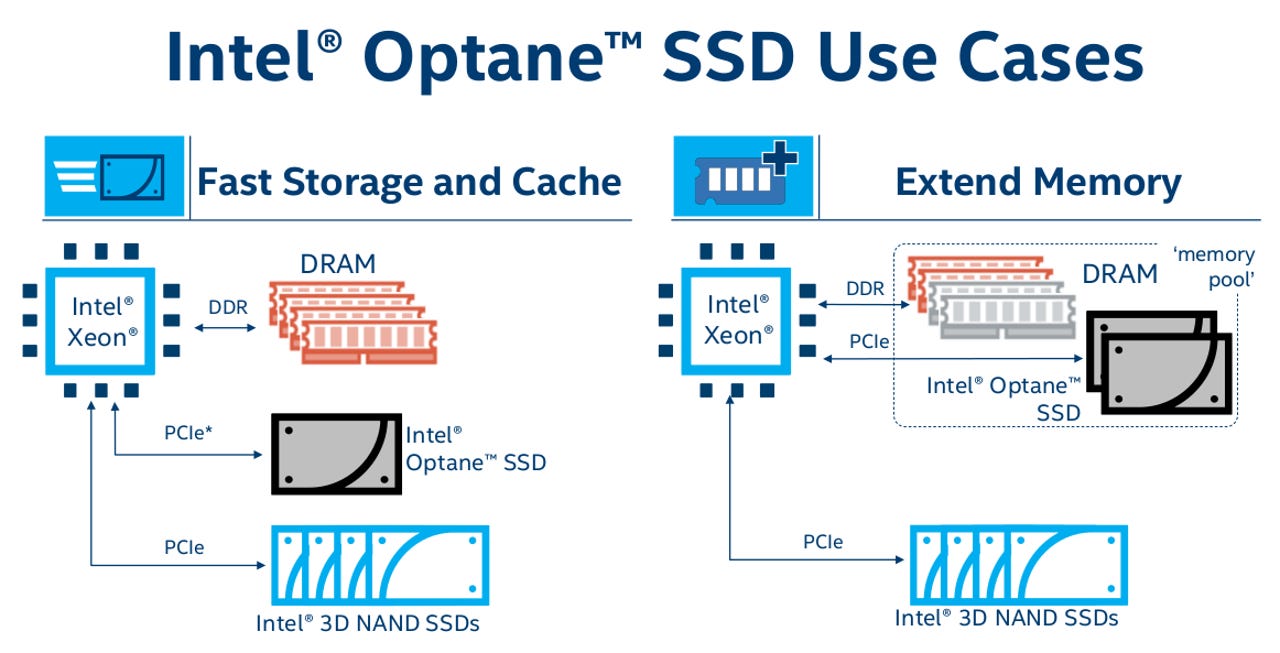Optane SSD fast enough to be used as memory extender: Intel


Intel has taken the wraps off its first Optane 3D XPoint storage product, the SSD DC P4800X, which the company claims can make database transactions up to 10 times faster.
Optane will first be available from today to select early customers as a 375GB add-in card, and during the second half of the year will also be available in 750GB, 1.5TB sized cards, and as U.2 drives.
Storage
Beyond its speed as a standard SSD replacement -- which the chip giant said is between 8 to 40 times more responsive under load compared to a SSD DC P3700 -- Intel is touting its usage as a memory extender.
Coupled with Memory Drive found on Xeon chips, an Optane SSD is able to be used in a memory pool along with DRAM without needing to adjust the OS or any applications.
For select workloads, the company said it believes as much as 90 percent of DRAM can be replaced with Optane SSDs.
In an example the company showed off, it took a dual-Xeon server with 678GB of RAM that was handling a 675GB MySQL database, and replaced all but 128GB of RAM with a pair of Optane 375GB drives, and only saw a 20 percent drop off in database performance.
With the larger capacity of Optane drives over memory modules, a dual-socket Xeon system could have 24TB of memory, and a quad-socket system would top out at 48TB of memory.
Intel said it sees Optane as being particularly useful for analytics, machine learning, and in-memory databases.
In the future, Intel said it would produce memory modules based on 3D XPoint technology.
At the end of 2016, Lenovo said it would be the first to ship Optane in its ThinkPad laptop lineup -- but the Optane drives will only be 16GB in size, and will be used in tandem with more traditional drives.
In early January, Intel said it would begin labelling motherboards with an M.2 slot using its 200 series chip as "Optane Memory Ready".
For the 2016 fiscal year, Intel posted operating income of $16.5 billion on revenue of $59.5 billion.
Revenue for the non-volatile memory solution group came in at $2.6 billion, down 1 percent from 2015.